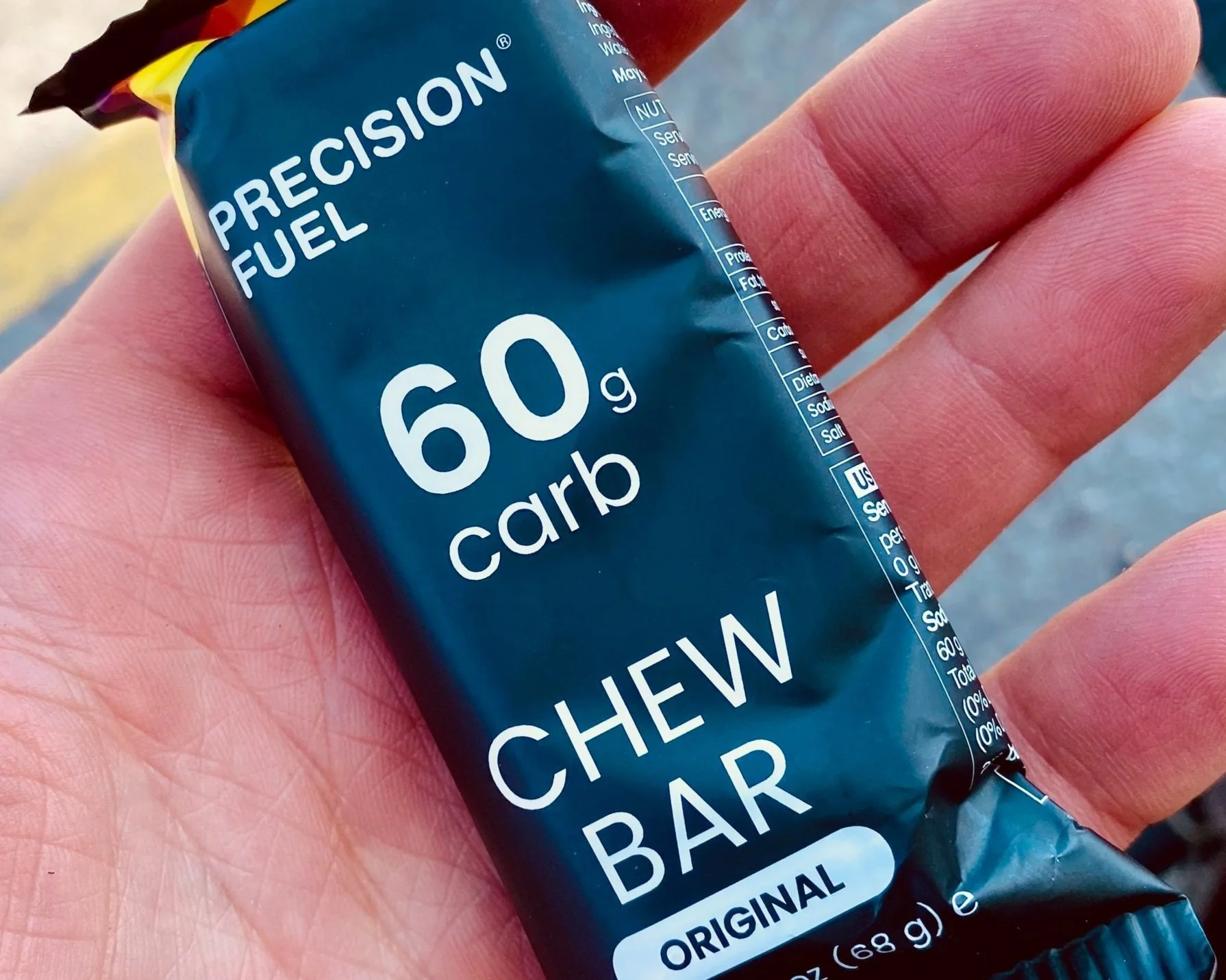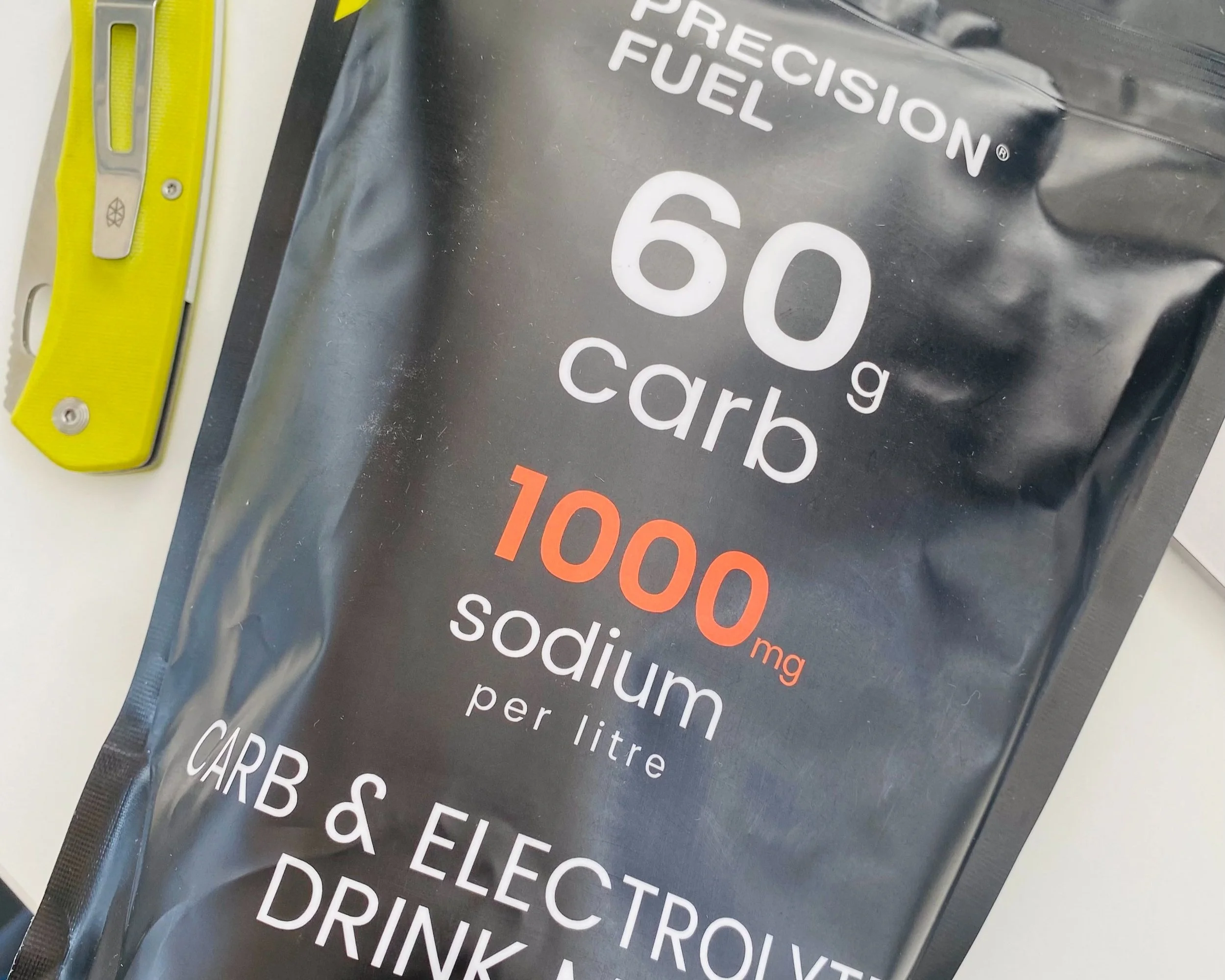Store bought or home brewed? Hydration tips for sweltering summer rides
When did performance drink mixes cross the SFr. 30 threshold for one nine-serving bag? How different are they from the Reddit DIY versions that are full of maple sugar and sea salt?
Thanks to a timely communication with Precision Fuel & Hydration and their willingness to send over some product for this unscientific-but-still-enlightening qualitative comparison, I was able to connect with company co-founder Andy Blow to explore the current carb “revolution,” “proper hydration mix” versus DIY mixes and how to best stay hydrated in what has already been a sweltering 2025 summer.
Worth it?
“Though homemade drink mixes may be cheaper, there are a few benefits to training and racing with off the shelf mixes compared to home brews of sugar and salt.”
-Andy Blow, Precision Fuel and Hydration
Pros are currently packing in 120g of carbs an hour when racing. What’s the current guidance for the rest?And what are the best ways to carb load during 3 hour+ rides?
“While pro cyclists are pushing up to and even above 120g of carbohydrate per hour (for example, Victor Campenaerts took on ~132g/h when he won stage 18 at the Tour last year), this level of intake is at the very high end and may not be practical or necessary for most athletes. The amount of carbohydrate athletes consume should instead depend on the intensity and duration of the ride they are completing.
The current scientific recommendations for a three-hour ride would be to consume between 60-90g of carb per hour depending on the relative intensity, and if optimal performance is the goal of the ride. For example, if you’re racing ‘full pelt’ for three hours and you’ve practised higher carb intakes in training, then 90g/h would be the recommendation.
For context, 90g of carb per hour might look like taking three gels in an hour, or drinking a carb drink mix and eating a bar. Work out which formats of carb you prefer to use - so, whether that’s gels, chews, bars, drink mixes, real food, or a combination of all of them. And then work out how much carb is in the products that you’re going to use to hit your numbers, so you know how much you should be eating and drinking to get enough carb on board to sustain your performance.”
It’s cheaper, but that's the only big win. What do cyclists stand to lose/gain going the route of home brew vs. off the shelf mix?
“Though homemade drink mixes may be cheaper to make in bulk, there are a few differences and benefits to training and racing with off the shelf mixes compared to home brews of sugar and salt.
The main one being, drink mixes have specific quantities of ingredients per serving that have been extensively tested to optimise carbohydrate and sodium delivery and absorption with maximal gut comfort and good taste. One of the biggest downsides of homemade drink mix is that it’s much harder to get these quantities correct and therefore they require much more trial and error. For example, salt is sodium chloride, and so to reach an individual's sodium target of (for example) 1000mg sodium per litre, this would actually require 2.5g of salt. The obvious issue here is that this would likely make your drinks taste really quite unpleasant.”
Convince a home brew user that they should be switching to a drink like Precision. What are the major performance benefits?
“With branded drink mixes, you’re paying for the consistency, convenience and performance/lab tested mix that is used by the professionals compared to just the raw ingredients. This makes it way easier to hit and track your carb and sodium intake targets, especially during long, intense rides.
When talking about rides of such long durations, flavour fatigue becomes another factor to consider (when you get tired of the same taste and texture) so using more than just drink mix (homemade or off the shelf) such as gels, chews and bars is important to hit your carb targets (which are even harder to make at home).”
Fuelling in the heat
“Each sip of the DIY stuff I made was like walking a diabetic’s razors edge. The stuff from Precision was reliable and satisfying. There was no comparison.”
Final impressions and reasons to properly fuel
In June, daytime highs in the Maritime Alps near Nice reached 40 degrees. And during a few rides in the region, there were several reasons why I opted for Precision product and not my own: 1) the taste, which was undeniably better than my experiment bottles and 2) relying on product that, as Andy mentioned, was lab tested and easier on my stomach.
Without question, their carb chews and drink mix have the effect most riders are looking for. Satisfying taste, mental alertness, the feeling of hydration, being satiated on longer rides. And for all those reasons - minus the costs, which run about 55 pounds for a 30 serving bag - if you’re a serious cyclist or just a cyclist who takes their rides seriously, in the heat, it’s probably best, unless you have unlimited time to experiment, to leave to powder mixes to the professionals.
My only challenge was to effectively reach the 60-90 gram carb threshold which, in such high temperatures, was almost impossible. Just no appetite to take on gels and chews in such temperatures. And yet again, another reason to rely on mixes where you’re sure of the exact contents - as drinking carbs, especially this summer, appears far easier than eating them.
Critical ride companions, the Precision Fuel and Hydration high carb chews are probably amongst the best tasting available anywhere.




